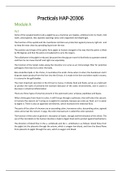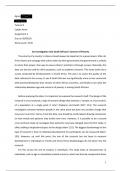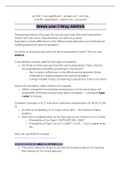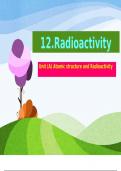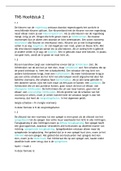Module A
Pz7
Some of the synapomorphic traits a piglet has as a mammal, are nipples, umbilical cord, fur (hair), milk
teeth, sweat glands, two separate openings (anus and urogenital) and diaphragm.
The function of the eyelids and the membrane nictitans are protection against pressure, light etc. and
to keep the eyes clean by spreading liquid over the eye.
The position and shape of the pelvis form piglet to human changed in the way that the pelvis is tilted
by 90 degrees and that the pelvis is broadened to carry the organs.
The collarbone in the piglet is reduced, because then the pig can move his forelimbs to a greater extend
and then he can move the left and right one separately.
The function of the lymph nodes along the intestine is to serve as an immunologic filter for potential
pathogens that may try to enter the body.
Bile emulsifies lipids in the chime, it neutralizes the acidic chime when it enters the duodenum and it
disposes waste product from the liver into the GI tract. It is made in the liver and when made in excess,
it is stored in the gall bladder.
The most important secretion in the GI tract is mucus. It dilutes food and fluids, serves as a lubricant
to protect the walls of primarily the stomach (because of the acidic environment), and it causes a
decrease in intestinal inflammation.
There are three types of enzymes present in the pancreatic juice: amylase, peptidase and lipase.
When chime goes from ileum to colon, it will first go through a sphincter, then will enter the caecum.
In humans the caecum isn’t as big as in piglets for example, because we cook our food, so it is easier
to digest it. There is also an appendix vermiformis, which maintains the intestinal flora.
The parts of the colon of a human are an ascending colon, transverse colon, descending colon, sigmoid
colon and at last the rectum. In pigs, the colon transversum is called the colon spiralum.
The function of the colon in general is resorption of water, storage and fermentation of the chime. The
use of the microbiota in the human intestine is help to digest food and to protect against bad bacteria.
The direction of blood flow in the a. umbilicalis and the v. umbilicalis is as follows: blood flows from
the piglet tot the placenta through the arterie, which is oxygen low blood, and then the blood flows
from placenta to piglet through the vein, which is oxygen rich blood.
,
,

